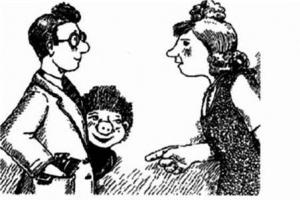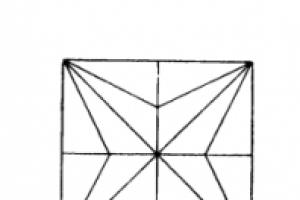- The paths intersect at a red flashing railway traffic light;
- Stopping movement and complete stop (forced and unauthorized) directly on the tracks;
- The vehicle crosses or travels along tracks outside of an organized crossing;
- The paths are crossed by a vehicle in front of a barrier, which is lowered. At the same time, the red flashing signal is on at the traffic light;
- The vehicle goes to the crossing, despite the prohibiting gesture of a traffic police officer or a traffic controller;
- The vehicle overtakes (not advances) for 1-99 m to the barrier/near rail;
- Overtaking cars that have stopped in front of a barrier or stop line;
- The vehicle overtakes directly at the railway crossing;
- The driver independently raises the barrier boom;
- Transportation through the tracks of automatic machines, mechanisms, machines that are not transportable (lawn mower and others);
- Moving through the paths of vehicles that reach a lower maximum speed 8 km/h without the appropriate permit (certain types of agricultural machinery);
- Reversing;
- Performing a U-turn on the tracks;
- Repeated violations of traffic rules at crossings over railway tracks.
Overtaking before a railway crossing
Before any railway crossing outside the populated area, regardless of whether it is equipped with a barrier or not, signs installed, which indicate the distance to the crossing.
Three stripe sign located in 150 m from moving, with two lanes – per 100 m, with one lane – for 50 m. For 100 m in front of the railway tracks any overtaking is prohibited, but advance is not prohibited.
In urban areas, crossings are equipped with other signs - sign railway tracks (1.1 ) and locomotive sign ( 1.2 ).
They are installed at a distance 100 meters from the paths. The same rule applies in the city - overtaking is prohibited beyond 100 meters to the railway tracks.
It should be noted that advance can be performed at any distance from the crossing. Considered to be ahead situation, when the speed of the vehicle is higher than the speed of the passing vehicle. It may involve changing lanes, and then return to your lane, or rebuilding without subsequent return to your lane.
Overtaking provides driving into oncoming traffic. Usually, you can easily navigate by the roadway markings when overtaking a passing vehicle is prohibited.
Detour- automobile goes around a stationary obstacle(for example, a broken car or road service vehicle) and then return to your lane.
The following is prohibited at a railway crossing:
- overtaking;
- passing cars.
Administrative monetary punishment for overtaking at the railway crossing - 1,000 – 1,500 rubles.
Stop at a crossing
Stopping at a railway crossing threatens the health and life of the driver and passengers. If this happened due to technical reasons, two car passengers poisoned on both sides of the tracks.
When the train approaches, they must give signals to the driver. The driver needs to do everything possible measures to remove the vehicle from the tracks. Railroad crossings have special stop lines and STOP signs that you need to stop in front of.
If moving not equipped with a barrier, stay absolutely necessary before the STOP sign, make sure it is safe to move forward but only then continue on your way. If there are no signs or lines at the crossing, then the stop is made in front of the railway crossing 5 meters from the barrier or 10 meters from the nearest rail.
 The fine for stopping at a railway crossing is 1,000 rubles or revocation of driver's license, term from 3 months to 6 months. Penalty for driving beyond the stop line And STOP sign on the move - 500 rubles.
The fine for stopping at a railway crossing is 1,000 rubles or revocation of driver's license, term from 3 months to 6 months. Penalty for driving beyond the stop line And STOP sign on the move - 500 rubles.
It is not prohibited to advance and avoid fixed obstacles, which are located in the traffic lane(For example, construction material, garbage, etc.).
Excessive haste often leads to incidents, and in the worst case, to big trouble. Hurry can especially cause considerable difficulties on oncoming roads, near railway tracks and other dangerous sections of the highway. Therefore, such a topic as overtaking at a railway crossing will be presented in detail in the light of traffic rules.
What is the fine for overtaking at a railway crossing and other rules of behavior for drivers on this section of the route will be discussed step by step.
Basic terms
Traffic offenses carry different meanings, despite their some similarities. To understand the terms well, you need to understand their meaning and differences. Now we will discuss concepts such as: overtaking, detour and advance. This will best help the motorist recognize how to behave competently in various situations on the road.
Leading is the action of the driver in relation to the moving neighboring car. To get ahead of the vehicle, as a rule, the speed increases. Then the vehicle enters the lane in the opposite direction or in the opposite direction if there is a broadband road surface. Getting ahead can happen with or without a lane change. Unlike overtaking actions, an advanced maneuver does not end by returning to the original position.
A detour is made in relation to stationary objects that appear along the vehicle’s route. Broken vehicle or another obstacle must be driven around if it is not possible to remove it from the road. A detour is made without going into oncoming traffic (along the side of the road, etc.) or with access to the oncoming path even through a solid line. After driving around a stationary obstacle, the driver returns to its original position.
Overtaking the vehicle in front, the driver increases driving speed and often enters the lane intended for oncoming traffic. The overtaking motorist ends the maneuver at the initially selected stage of the route.
Paragraph 14.1 of the traffic rules states that overtaking is prohibited on difficult and dangerous sections of the highway. These include:
- pedestrian crossings;
- intersections;
- bridges, overpasses, tunnels and other reinforced concrete structures;
- tram lines;
- railway passages and within a radius of 100 meters from the tracks;
- objects marked with prohibitory signs.
What types of railway crossings are there?
All railway crossings are divided into two types:
- adjustable;
- unregulated (more dangerous).
The regulated railway section is equipped with traffic lights, barriers, employees on duty, warning signs and other mechanical obstacles.
The unregulated railway section does not have a traffic light or an employee on duty. However, it is obligatory indicated by special road signs.
The DD rules, paragraph 15, stipulates everything that the driver must observe on roads of various types. Let us describe several prohibitions contained in this paragraph. At a railway crossing it is prohibited:
- stop;
- stand;
- drive in reverse;
- turn the vehicle;
- turn the vehicle around;
- overtake a neighboring car.
Important! Crossing railway tracks is permitted only in strictly designated and marked areas.
At a controlled railway intersection
Now we will discuss step by step what is strictly prohibited at the site under discussion during traffic:
- Drive through a prohibiting traffic light. A red signal, flashing alternately or together with all lights, blocks the way.
- The barrier is closing or has already blocked the road. Do not drive ahead of the barrier when it is open. It can close from behind and then, when you back up the car, you will break the closing rod.
- The employee on duty signals by raising his hands up or spreading them to the sides.
- A traffic jam that forms ahead can cause the car to sit on the rails if the driver continues driving.
The traffic light signal warns that a train is approaching, which means the driver slows down his car near the STOP sign. Another option is to slow down at the transverse solid line, if there is one. When the barrier is closed, not reaching 5 meters, we make a stop near it or 10 meters before the start of the rail. A car that is “stuck” on the tracks (broken, etc.) must give all possible signals to the approaching locomotive. Passengers, in turn, must immediately leave the car.
A triangle-shaped plate with a red border, in the middle of which there is a picture of “rails, sleepers,” is installed near the barrier. Warning signs: 1.4.1 – 1.4.6 are located 150, 100 and 50 meters before the railway passage.
Before crossing, overtaking is prohibited, and advancing without entering the oncoming lane is allowed. At the same time, do not forget to comply with some mandatory conditions:
- good visibility of the track;
- changing lanes does not interfere with other motorists;
- the car being led does not enter pedestrian or bicycle paths, roadsides, or sidewalks;
- there is no warning sign;
- lack of continuous markings on the road.
At an unregulated railway intersection
A triangular sign with a red border, in the center of which a steam locomotive is depicted, indicates an unregulated passage. A red sign in the form of an octagon with a white inscription “STOP” prohibits vehicles from traveling beyond the maximum distance from the beginning of the rails. Such maneuvers as: stopping on rails, driving in reverse on them, overtaking, turning a vehicle around or turning are punishable on unregulated objects. Paragraph 12.4 of the traffic rules covers the actions of drivers on railway tracks.
Driving in violation of traffic rules is prohibited on a railway passage if a train is approaching. In this case, the driver must stop within 10 meters of the rail passage.
How to overtake before and after a railway intersection?
In addition to the warning signs described above, there are 2 more, indicating multi-track and single-track railways. They have the shape of white crosses with blunt and sharp corners in red border.
- Sign 1.3.1 indicates a single-track road.
- Road sign 1.3.2 informs you that there is a multi-track railway in front of you. This sign has the addition of a similar checkmark at the bottom.
- Outside populated areas, railway crossing designations are placed 300-150 m before its location. In urban areas, signs are set within 50 m.
Attention! Overtaking cars and motor vehicles is prohibited within 100 meters before the start of a railway crossing. If your eye is not good enough, you should be guided by special symbols.
When overtaking a vehicle in front to the 100-meter mark, pay attention to the following prohibitions:
- There is a solid line drawn on the road.
- There is a “No Overtaking” sign nearby.
- Poor visibility or insufficient lighting.
- The driver ahead has turned on the left turn signal or is already overtaking other participants.
- The driver is not confident that the maneuver will be completed, namely that he will unhinderedly take a position between the two vehicles.
Overtaking after crossing a railway track is permitted. However, all previously listed prohibitions in violation of traffic rules remain in force.
What is the penalty for overtaking at a railway crossing?
Administrative fines in the amounts prescribed by the state reach violators in two ways:
- In case of personal arrest by a traffic police inspector or traffic police officers.
- Using automatic cameras, photo or video recording.
Sometimes the drafted protocol on an accident ends up in a judicial body. More often this happens due to the filing of an application for appeal by the accused, but who does not consider himself to be such.
Article 12 of the Code of Administrative Offenses Russian Federation regulates measures to suppress violators of safe driving on railway passages.
- Crossing in the wrong place railway will cost the reckless driver 1000 rubles. a fine or he will be deprived of his driver's license for a period of 3–6 months.
- Driving under a closed or closing barrier or during a traffic signal is punishable. The unfortunate driver faces a fine of 1000 rubles. or confiscation of driving license for 3–6 months.
- U-turns, turns, moving a car backwards on railway rails, as well as ignoring markings and other signs are fined in the amount of 500 rubles.
- Stopping or continuing to stand on the tracks is fraught with confiscation of your driving license for a period of 3 to 6 months. Or a fine of one thousand rubles will be imposed.
- Wrong going around an obstacle on the roadway of rail tracks, you can pay a fine in the range of 1000–1500 rubles.
- Overtaking committed before crossing railway tracks or on them is fined 5,000 rubles or the driver’s license is revoked for a period of four to six months.
Punishments, as we see, are not so cheap and harmless. For a repeated overtaking offense within a year from the start of the first offence, the driver's license will be suspended for 12 months. Repeated traffic violations recorded by an automatic camera are fined the same amount. After withdrawing your driver's license, you must take an exam to refresh your memory on the Rules of the Road. Only after retaking the exam the offender will be given the right to drive again.
Is it possible to reduce the punishment?
Answering the essence of the matter, let’s say right away that it is possible. But it is important to provide convincing arguments to justify yourself. It is advisable to film the maneuvers performed on household electronic devices that are at hand. The best help for filming is a personal video recorder or a recorder of neighboring vehicles. Remember that only compelling reasons can mitigate or completely cancel corrective measures.
To file a complaint to challenge an offense, 10 days are allotted from the date of signing the protocol on the administrative violation. The protocol is signed by traffic police officers, but your signature may not appear. When filing an appeal, it is important to indicate the reason for your actions, as well as attach photographs (copies of photographs, etc.) or other evidence of your non-involvement. There are several ways to submit an application:
- Personally to the traffic police department.
- By filling out the application form on the official website of the State Traffic Safety Inspectorate online.
- Send the application by mail to the nearest traffic police department with acknowledgment of receipt.
- Submit an application or contact your local judicial authority in person.
We hope that your attempts to achieve justice will lead to a positive result. Have a successful ride on the railways!
In the event of a collision with a train, it is almost impossible to survive. Moreover, fatal consequences threaten both ordinary citizens who do not take precautions when crossing railway tracks, and motorists who decide to overtake at a crossing. Without having all the information about what a railway crossing is and what the rules are for crossing the railway, the driver risks not only his own, but also the lives of his passengers. In addition, any violation of traffic rules committed at a crossing entails serious administrative penalties.
Railway crossing is a crossing point highway and railway tracks. TO existing species crossings must also include the intersection of a railway with a bicycle or pedestrian path. In accordance with, upon seeing a “Stop” sign in front of a railway crossing, as well as other signs and restrictions related to overtaking at and near railway crossings, the driver is obliged to reduce speed and stop at least 5 meters before the barrier. If it is absent, then the stop must be made 10 meters from the rails.
What is prohibited to do near the railway? moving
Stopping before crossing railway tracks is not the only prohibition that a driver must observe. The regulations strictly prohibit overtaking any other vehicle in this zone. According to clause 8.11 of the traffic rules, it is also prohibited to make a U-turn in front of a railway crossing.
Despite the raised barrier, cars are strictly prohibited from stopping while crossing the railway tracks. If the driver neglects this prohibition, he will not face, but the confiscation of his driver's license for long term. The only exception is a forced stop due to a sudden breakdown of the car.
Overtaking before moving
Traffic rules prohibit any overtaking before a railway crossing if the barrier is less than 100 meters away. Administrative punishment for overtaking at a railway crossing in 2019 includes a fine of up to 1,500 rubles. according to the Russian Federation. Such a penalty is imposed when the car entered the opposite lane to avoid an obstacle.
If a moving vehicle was overtaken within the 100-meter prohibited zone in front of the barrier, then the legal norms will be more stringent. is appointed not based on the norms of paragraph 3 of Article 12.15 of the Code of Administrative Offenses, but in accordance with the more severe paragraph 4 of the same article. It involves a fine of 5,000 rubles or confiscation of the driver’s license for up to 6 months.
Stop
Safety requirements for driving through railway intersections strictly prohibit motorists from stopping while crossing the rails, even with the barrier raised. The fine for stopping and parking at a railway crossing is imposed in accordance with clause 1 of Article 12.10 of the Code of Administrative Offences, which involves a penalty of 1000 rubles. An alternative punishment, according to the same paragraph of the article, is deprivation of rights for up to 6 months.
Traffic across railway tracks: Video
If the car stalls while crossing the railway
In an unforeseen situation, when a car stalls right at a crossing, the driver is obliged to make every effort to remove threats to the lives of citizens, and then take measures to clear the railway track from the car as soon as possible.
In particular, clause 15.5 of the Russian Traffic Regulations states that in the event of a forced stop at a railway crossing, the driver must follow the following sequence of actions:
- disembark passengers;
- if it stalled a car, try to push it to get off the rails;
- if it is not possible to clear the tracks, it is necessary to direct people along the railway tracks in both directions to give a signal to the driver;
- if people were not sent towards the train, then when the train approaches, the driver must run towards it along the tracks, giving a signal with circular movements of his hand ( glowing flashlight or other bright object).
The listed actions must be performed if the car stalls while driving through an uncontrolled railway crossing. If the barrier is controlled with the participation of a Russian Railways employee on duty, it is necessary to immediately notify him so that the driver receives information about the presence of an obstacle on the way. This will allow you to perform emergency braking and prevent a collision between the train and the car.
Driving at a prohibitory traffic light

Currently, the vast majority of crossings are equipped with automatic barriers and alarm systems. Many crossings also have stationary CCTV cameras. However, this does not stop some drivers who stubbornly want to “slip through”, despite violating the rules for passing the railway crossing.
The closing of the barrier indicates an approaching train. But this does not mean that the train will pass immediately after the barrier is lowered. Usually the train passes 5-10 minutes after the traffic stops.
In addition to the lowering barrier, the upcoming approach of a train is warned by flashing traffic lights at the railway crossing, accompanied by an alarm bell. light alarm is assigned in accordance with clause 1 of Article 12.10 of the Code of Administrative Offenses (1000 rubles). Additional measure The penalty is deprivation of rights for up to 6 months.
Is it possible to appeal a fine?
As in similar cases related to traffic violations, regardless of the justification for imposing a fine, the law provides citizens with the opportunity to protect their interests in court. Considering that the amount of the fine under Article 12.10 is not that large, and moreover, when paying within the first 20 days after the fine is imposed, a 50% discount on the amount of the imposed penalty is allowed, drivers usually challenge only the deprivation of rights. This can be done in the court of first instance or during an appeal.
If, during the consideration of the circumstances of the case in the district court, a decision was made to temporarily confiscate the driver’s license from the offender, if you intend to appeal this verdict, you must comply with the deadline for filing an appeal. It is 10 days from the date of announcement of the lower court's decision.
Does a driver have a chance to mitigate the punishment for driving on railway tracks when the traffic light is prohibiting, if the fact of the violation is obvious? Experience shows that this is quite possible even if there is video footage from a surveillance camera confirming that the car is performing a prohibited maneuver. The following factors may influence the judge's decision:
- sincere repentance of the driver;
- the violation occurred to prevent emergency situation(the driver drove into the oncoming lane to prevent another car from driving onto the railway tracks);
- the driver is a person who needs to constantly use a car (for example, a disabled person, a single woman with a small child, a pregnant woman).
If a case of a sudden stop at a railway crossing is being considered in court, then the results of an independent technical examination, which confirm a malfunction of the car’s engine, may testify in favor of the driver.
Before starting to drive a personal vehicle, the driver must study the traffic rules, and also find out whether overtaking is allowed at a (railway) crossing in 2020, and what the punishment is for the offense.
General points
Dear readers! The article talks about standard methods solutions to legal issues, but each case is individual. If you want to know how solve exactly your problem- contact a consultant:
APPLICATIONS AND CALLS ARE ACCEPTED 24/7 and 7 days a week.
It's fast and FOR FREE!
According to Russian legislation, overtaking at a crossing without a barrier is prohibited. You can perform the maneuver only if several conditions are met, and without driving onto the railway rails.
For violating the rules of overtaking and driving in the area of railway tracks, fines are imposed. In the event of a repeated offense, the fine is doubled and possible deprivation of the driver's license.
The traffic police inspector may not stop the car, but a report will be drawn up, and after some time the driver must pay a fine. Photo and video recordings are used as evidence of guilt.
Overtake at a crossing traffic rules strictly prohibited. The following nuances must be taken into account:
- You cannot maneuver into oncoming traffic. However, if the roadway is wide enough and the maneuver can be performed without entering the adjacent lane in front of the railway crossing, and also without running over the rails, then the maneuver is not considered a violation.
- It is prohibited to overtake any vehicles that are parked directly in front of a railway crossing.
The boundaries of railway crossings are indicated in Russia by signs No. 1.3.1 and 1.3.2.
Photo: railway road signs 1.3.1 - 1.3.2
Initial data
In order not to commit an offense, the driver must clearly understand what is overtaking, and in what cases it is about ahead.
Overrunning is an increase in the speed at which a car is moving in order to exceed the speed of another car. Advancement can be accomplished without entering the oncoming lane.
Detour, overtaking is a maneuver to get ahead of other vehicles, entering the oncoming lane. This involves avoiding a fixed or moving obstacle on the road.
Russian drivers should pay special attention to the current traffic rules and comply with them, including when negotiating the section.
This is necessary primarily in order to preserve the health and life of the driver and passengers of the car.
The danger lies in the fact that many motorists try to reverse when they find themselves in the railway track area, and such a maneuver is strictly prohibited.
When approaching a crossing, you need to slow down and cross the tracks carefully and slowly.
What does the traffic rules say about distance?
You can only start moving according to a permit installed near the railway tracks. On driveways without barriers, audible warning signals are also used.
In , there are restrictions that must be taken into account when overtaking in the railway area:
A situation may arise when the driver begins to overtake, and only after that notices a prohibitory sign. In this case, the maneuver does not need to be completed.
In order to avoid an offense, you need to slow down and let another car pass, after which you should return to the passing part of the lane as quickly as possible and follow the previously overtaken vehicle.
What regulations governs
Legal acts regulating overtaking at railway crossings and establishing fines for drivers who violate the law:
- – On ensuring road safety.
- – a regulatory document on the basis of which administrative punishment is imposed on drivers.
- – Rules for technical inspection of vehicles.
Failure to comply with current traffic laws can result in the driver not only being subject to a large fine, but also depriving the driver of a driver’s license for a period of several months to several years.
What is the penalty for overtaking at a crossing?
In the railway crossing area it is strictly prohibited:
- drive in reverse;
- make a U-turn while at a crossing;
- continue driving even after a sound or light warning is triggered;
- cross the road when the barrier is lowered or closed, as well as when installing any other barrier.
For committing one of these actions, the driver is subject to a fine in the amount established by the norms of the Code of Administrative Offenses, or deprivation of his driver’s license.


What signs are installed at the railway intersection (before, after)
Sign number 1.1 means that there is a railway crossing at a distance of 100 to 300 meters. The distance for installing the sign is determined depending on whether the crossing is located in a populated or non-populated area.

Photo: road sign 1.1 railway crossing with barrier
Sign No. 1.2 means a railway road without a barrier, and is installed in the same way, within 50 - 300 meters before the crossing.

Photo: road sign 1.2 railway crossing without barrier
Sign 1.3.1, which is fixed at a short distance from the railway, and is used to designate a section of railway rails that have only one track.

Photo: road sign 1.3.1 single track railway
Sign number 1.3.2 is also installed before the crossing and indicates a multi-track railway.

Photo: road sign 1.3.2 multi-track railway
Immediately before the crossing, at some distance from each other, signs with numbers 1.4.1 - 1.4.6 are installed, indicating the distance that remains to the railway crossing.

Photo: road signs 1.4.1-1.4.6 approaching a railway crossing
Is there a fine?
Drivers who violate traffic rules, in particular when crossing railway tracks, may receive punishment in accordance with the norms (Administrative Code of the Russian Federation).
The type of punishment is determined by the type of illegal action committed:
The driver can receive a fine if an offense has been recorded. In this case, the car will not necessarily be stopped by the inspector - it can be compiled on the basis of data obtained from studying photos and video recordings.
By following traffic rules, the driver can ensure safety not only for himself, but also for other road users.


For driving through a prohibitory signal
The detour ban in the railway area applies only to other vehicles.
The driver has the right to drive around various obstacles - static objects, however, the barrier must be raised.
If a driver drives through a prohibiting signal, he is given a fine of 1,500 rubles. In addition, overtaking in a railway crossing area may result in the deprivation of your driver's license for a long period.
Video: driving across railroad tracks
Stop or parking
The Traffic Rules state that stopping a vehicle at a railway crossing is strictly prohibited.
However, force majeure situations on the road are not uncommon, and often you have to make a forced stop.
If it becomes necessary to stop a car in the immediate vicinity of a crossing, it is necessary to disembark all passengers and send them to both sides of the railway in order to warn the train driver that the car is stuck on the tracks.
Otherwise, the fine for stopping will be 500 rubles. This punishment is not high, however, in 2020 the situation may change significantly.
Is it possible to commute the punishment?
According to traffic regulations, stopping at a railway crossing is permitted only if it is necessary. For example, if there is a large blockage on the road.
To mitigate the punishment, the driver must take all measures to eliminate the current situation.
The final amount of penalties or the possibility of deprivation of rights depends on whether the citizen has mitigating circumstances.
Such circumstances may include:
- strong emotional disturbance of the driver due to personal problems, family circumstances;
- complete repentance of the offender for his crime;
- prevention of possible harmful consequences that could be caused as a result of the offense;
- committing a violation by a woman who is expecting a child.
However, mitigating circumstances can only be applied if the case is referred to a judicial authority.
In order to reduce the size of the fine, it is often enough to pay it within 20 days from the date of assignment. In this case, a 50% discount applies.
Crossing a railroad crossing incorrectly may result in your license being revoked. This situation threatens the lives of the driver and passengers, so the punishment will be appropriate. The fine for railroad crossings may vary. Its value depends on the classification of the traffic violation.
What are you most often fined for?
 Most often, when crossing a railway crossing, you are fined for driving through a prohibitory traffic light. The car owner may face this offence. deprivation of rights for a period of three to six months. In case of repeated violation, the driver's license may be revoked for 1 year.
Most often, when crossing a railway crossing, you are fined for driving through a prohibitory traffic light. The car owner may face this offence. deprivation of rights for a period of three to six months. In case of repeated violation, the driver's license may be revoked for 1 year.
Paragraph 15.4 of the traffic rules states that, subject to the presence of a barrier, the driver is obliged to stop the vehicle five meters before the railway tracks. The absence of a barrier obliges the driver to stop ten meters from the nearest rail.
However, there are situations in which the car owner was unable to stop the car at a certain mark, and he does not have the right to reverse (this is evidenced by paragraph 8.12 of the traffic rules, which states that reversing at a crossing is prohibited). The driver is fined. To somewhat mitigate the punishment, it can be noted in the protocol that the barrier was open and there was no prohibiting signal. This will help you avoid a fine for driving through a railroad crossing on a red light.
Detour and overtaking at railway crossings
 Traffic rules prohibit making a detour at a crossing into the oncoming lane. This prohibition applies to sections of the road of small width. If you can make a maneuver without driving into oncoming traffic, then the action will not be interpreted as an offense. These restrictions apply exclusively within the boundaries of a railroad crossing marked by a barrier or stop sign.
Traffic rules prohibit making a detour at a crossing into the oncoming lane. This prohibition applies to sections of the road of small width. If you can make a maneuver without driving into oncoming traffic, then the action will not be interpreted as an offense. These restrictions apply exclusively within the boundaries of a railroad crossing marked by a barrier or stop sign.
Important! It should be noted that it is only prohibited to pass other vehicles. Driving around static objects in this context cannot be considered a violation of traffic rules.
As for the penalty, avoiding an obstacle at a railway crossing and then driving into the oncoming lane is punishable by a fine of up to 1,500 rubles. This moment noted in Article 12.15 of the Administrative Code.
Overtaking at a crossing
Paragraph 11.4 of the traffic rules states that you cannot overtake near a railway crossing less than 100 meters before the start of the tracks. To correctly determine the distance, you need to pay attention to road signs.
The fine for overtaking at a railway crossing involves payment of an amount that varies from 1000 to 1500 rubles. This punishment is relevant if the driver drove around an obstacle and drove into the oncoming lane. Overtaking a vehicle may result in confiscation of your license.
Stopping at a railway crossing
 Paragraph 12.4 of the traffic rules states that stopping at a railway crossing is prohibited. However, sometimes force majeure situations occur in which a stop is forced. Such cases are most often caused by a technical malfunction of the vehicle. Considering the great risk to life, it is necessary to carry out all actions very clearly.
Paragraph 12.4 of the traffic rules states that stopping at a railway crossing is prohibited. However, sometimes force majeure situations occur in which a stop is forced. Such cases are most often caused by a technical malfunction of the vehicle. Considering the great risk to life, it is necessary to carry out all actions very clearly.
Initially, all passengers should be disembarked and all attempts should be made to remove the vehicle from the tracks. Two passengers must go in opposite directions along the rails and, if a train is detected, inform the driver about the presence of a vehicle at the crossing. The driver must sound a special signal at this time.
The fine for stopping at a crossing is not too high. This is about in the amount of 500 rubles. This is stated in Article 12.19 of the traffic rules on violation of stopping rules. Not too high a penalty is one of the main reasons that such an offense occurs most often in practice. I would like to believe that the current trend will change in 2020.
Controversial issues
 The size of the fine depends on the interpretation of the offense committed. There are situations when, while crossing a railway crossing, the car driving ahead stalls. In this case, the driver must not enter the rails until the other vehicle has left this section. This rule is relevant only for crossings whose length is no more than 7 meters. If the crossing is very long and has several rows of rails, then a forced stop can be interpreted as a traffic violation.
The size of the fine depends on the interpretation of the offense committed. There are situations when, while crossing a railway crossing, the car driving ahead stalls. In this case, the driver must not enter the rails until the other vehicle has left this section. This rule is relevant only for crossings whose length is no more than 7 meters. If the crossing is very long and has several rows of rails, then a forced stop can be interpreted as a traffic violation.
In this case, it is necessary to indicate all the details of the incident. If this is not done, then the driver may face deprivation of his license. In addition, various mitigating circumstances may influence the final punishment. These include:
- strong emotional disturbance due to personal circumstances;
- offender's remorse;
- prevention of harmful consequences by the offender;
- commission of an offense by a pregnant woman or a woman with a child.
Such circumstances may help if the case goes to court. It should be noted that each case is considered separately.
Video: Rules for driving through a railway crossing
What's the result?
Overcoming a railway crossing requires the driver to concentrate. Compliance with the rules when performing this maneuver should not be determined by the desire to avoid fines, but to preserve one’s own life and ensure maximum safety for passengers.









